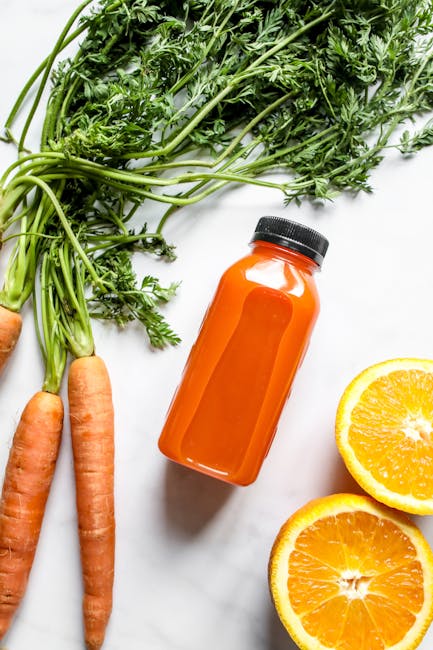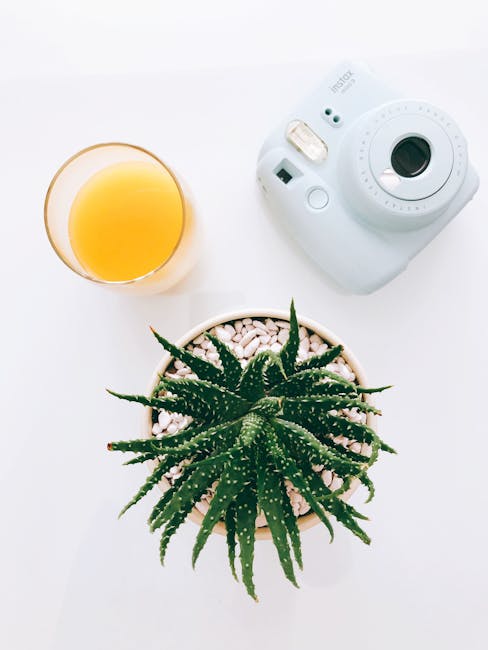The vibrant, sunshine-hued elixir you’re about to enjoy, Refreshing Orange Carrot Juice, boasts a history as rich and complex as its flavor profile. While pinpointing its precise origin is difficult, the individual components – oranges and carrots – have long and storied pasts interwoven with various cultures. Oranges, believed to have originated in Southeast Asia, were cultivated and prized for centuries, eventually spreading across the globe via trade routes. Their journey brought them to the Mediterranean, where they became a symbol of wealth and prosperity, and later to the Americas, transforming into a staple fruit across continents.
Carrots, on the other hand, have a more geographically diverse history. Wild carrots, the ancestor of the sweet, orange variety we know today, originated in Persia (modern-day Iran). Initially cultivated for their medicinal properties and leaves, the orange carrot, a relatively recent development, emerged in the Netherlands during the 17th century. Interestingly, earlier carrot varieties were purple, yellow, or white, with the orange color arising from selective breeding, possibly influenced by the popularity of the House of Orange.
The combination of orange and carrot juice represents a delightful fusion of these two powerful ingredients. While there’s no single documented invention of this juice blend, its popularity stems from the inherent health benefits of its components. Oranges are packed with Vitamin C, a potent antioxidant, while carrots are an excellent source of Vitamin A, crucial for vision and immune function. In fact, a single cup of carrot juice can provide up to 200% of the recommended daily intake of Vitamin A. This nutritional synergy has made orange carrot juice a popular choice among health-conscious individuals worldwide.
Beyond its nutritional value, orange carrot juice holds cultural significance in many parts of the world. In some cultures, it’s associated with vitality and good health, often served as a refreshing beverage after meals or as a part of detoxifying diets. Recent studies indicate a growing global market for blended fruit and vegetable juices, with a projected growth rate exceeding 5% annually. This reflects a growing awareness of the importance of incorporating nutrient-rich beverages into daily routines. Our Refreshing Orange Carrot Juice aims to capture this trend, offering a delicious and convenient way to boost your daily intake of essential vitamins and minerals.
Ingredients and Measurements
This recipe for Refreshing Orange Carrot Juice yields approximately 4 servings (about 2 cups each). The quantities listed below can be easily scaled up or down depending on your needs. Always use fresh, high-quality ingredients for the best flavor and nutritional value.
For the carrots, we recommend using a mix of both orange and yellow carrots. Orange carrots provide a vibrant color and sweetness, while yellow carrots contribute a subtle earthiness and a boost of beta-carotene. Avoid using carrots that are soft, shriveled, or show signs of spoilage. Firm, crisp carrots will result in a superior juice.
Carrots: 1 pound (approximately 4-5 medium-sized carrots). To achieve the best results, thoroughly wash the carrots under cold running water, scrubbing away any dirt or debris. Peeling the carrots is optional; leaving the skins on adds fiber and nutrients, but some prefer a smoother juice without them. If peeling, use a vegetable peeler to remove the outer layer efficiently. Note: If using pre-cut carrots, ensure they are fresh and haven’t been stored for an extended period. Pre-cut carrots are prone to quicker oxidation.
Oranges: 3 medium-sized navel oranges. Navel oranges offer a sweet and juicy pulp ideal for juicing. Choose oranges that feel heavy for their size, indicating high juice content. Avoid oranges with blemishes or soft spots. Before juicing, thoroughly wash the oranges under cold running water to remove any surface contaminants. It’s crucial to avoid using treated oranges if you’re sensitive to pesticides or waxes.
Optional Ingredients: To enhance the flavor profile and add nutritional benefits, consider incorporating these optional ingredients. These quantities are suggestions and can be adjusted to your preference:
- Ginger (optional): 1-inch piece of fresh ginger, peeled and roughly chopped. Ginger adds a spicy kick and anti-inflammatory properties.
- Lemon (optional): ½ a lemon, juiced. A small amount of lemon juice brightens the overall taste and acts as a natural preservative.
- Water (optional): ½ cup of cold water. Adding water can adjust the consistency if the juice is too thick.
- Honey or Maple Syrup (optional): 1-2 tablespoons, to taste. Add sweetness if desired, but remember that carrots and oranges already provide natural sugars.
Important Note: The quantities provided are guidelines. Adjust the amounts of carrots and oranges to achieve your preferred balance of sweetness and carrot flavor. If you prefer a stronger carrot taste, increase the amount of carrots accordingly. Conversely, if you prefer a more pronounced orange flavor, use more oranges.
Storage: Store leftover juice in an airtight container in the refrigerator for up to 2 days. The color of the juice may darken slightly over time, which is a natural process and doesn’t affect its safety or taste significantly. However, consuming it within a couple of days is recommended for optimal freshness.
Preparation of Ingredients (Washing, Peeling, Chopping)
Before embarking on the juicing process, meticulous preparation of your ingredients is paramount to achieving the best flavor and quality in your Refreshing Orange Carrot Juice. This section details the essential steps for washing, peeling, and chopping the oranges and carrots.
Washing: Begin by thoroughly washing both your oranges and carrots under cold, running water. This crucial step removes any dirt, pesticides, or other surface contaminants that may be present. Scrub the oranges gently with your fingers or a soft vegetable brush to remove any lingering debris from the skin. For carrots, use a vegetable brush to clean away any soil clinging to their surfaces. Pay close attention to the crevices and grooves where dirt can accumulate. Rinse both fruits and vegetables thoroughly to ensure all traces of dirt are removed.
Peeling the Oranges: The method you choose for peeling oranges will depend on your preference and the type of juicer you are using. For a standard juicer, you’ll need to peel the oranges completely. Use a sharp paring knife to carefully cut away the peel, avoiding removing too much of the white pith, as it can impart a bitter taste. Work slowly and deliberately, ensuring you remove all the peel without wasting too much of the edible fruit. A good technique is to slice the orange in half, then peel each half in sections from top to bottom. If you are using a citrus juicer that extracts juice without needing to peel the fruit, then this step can be skipped. However, it is usually preferred to remove the peel for a cleaner and more appealing juice.
Peeling and Chopping the Carrots: For this recipe, we’ll be using approximately 4 medium-sized carrots (about 300g in total weight). Begin by washing the carrots thoroughly as described above. Then, use a vegetable peeler to remove the outer skin of each carrot. A sharp peeler will make this process quick and efficient. After peeling, you have two options: you can either chop the carrots into smaller pieces (approximately 1-inch sections) for easier juicing, or you can leave them whole depending on the capacity of your juicer. If using a smaller juicer, chopping will help prevent clogging. If using a larger, more powerful juicer, you may be able to process whole carrots without issue.
Important Considerations: Always use sharp knives for peeling and chopping to ensure clean cuts and prevent accidents. Keep your work surface clean and organized throughout the preparation process. Use a cutting board designed specifically for food preparation. If you have any doubts about the freshness or quality of your produce, discard it. Properly prepared ingredients are the foundation of a delicious and refreshing Orange Carrot Juice.
Once the oranges and carrots are washed, peeled, and chopped (if necessary), you are ready to proceed to the juicing stage. Remember to always prioritize food safety and hygiene throughout the process.
Juicing Process
Creating refreshing orange carrot juice is a straightforward process, but achieving the optimal flavor and texture requires attention to detail. This section outlines the steps involved, from selecting the produce to enjoying your freshly squeezed juice.
Ingredient Selection: Begin by selecting high-quality, ripe oranges and carrots. For approximately 4 servings of juice, you’ll need about 6 medium-sized oranges (approximately 1.5 lbs) and 4 medium-sized carrots (approximately 8 ounces). Choose oranges that feel heavy for their size and have smooth, unblemished skin. Select carrots that are firm and bright orange in color, avoiding those that are soft or have blemishes. Proper ingredient selection significantly impacts the taste and nutritional value of your juice.
Preparation: Thoroughly wash both the oranges and carrots under cold running water. Scrub the oranges gently to remove any dirt or residue. Use a vegetable brush for the carrots to ensure you remove any soil clinging to the surface. Washing is crucial for hygiene and removing potential pesticides.
Juicing the Oranges: There are several methods to juice oranges. A manual citrus juicer is ideal for small batches, ensuring you extract the maximum amount of juice. Alternatively, a centrifugal juicer can be used for larger quantities, but it may leave some pulp behind. If using a manual juicer, cut the oranges in half and firmly press each half onto the juicer, rotating it until all the juice is extracted. If using a centrifugal juicer, simply cut the oranges into quarters and feed them into the juicer. For optimal results, use a juicer that minimizes pulp separation and maximizes juice extraction.
Juicing the Carrots: Carrots are best juiced using a centrifugal juicer or a masticating juicer. These types of juicers are designed to handle the fibrous nature of carrots effectively. If using a centrifugal juicer, simply cut the carrots into manageable pieces, about 2-3 inches long, and feed them into the juicer. Masticating juicers often require less preparation, sometimes allowing you to feed in whole carrots. Avoid using a blender or food processor as these will produce a pulp-heavy mixture, not a clear juice.
Combining and Serving: Once both the orange and carrot juices are extracted, combine them in a large pitcher. Stir gently to ensure even distribution. Taste the juice and adjust the sweetness if needed. Some people prefer adding a touch of honey or maple syrup, but this is entirely optional. Serve immediately for the freshest flavor and maximum nutritional benefits. For best results, consume the juice within a few hours of juicing to prevent oxidation and nutrient loss.
Storage (if necessary): If you need to store any leftover juice, pour it into an airtight container and refrigerate it. The juice will keep for approximately 1-2 days, but the flavor and nutritional value will gradually decrease over time. Avoid storing juice for extended periods, as it may lose its freshness and develop an off-flavor.
Straining (if needed)
While many juicing enthusiasts embrace the pulp in their juice for added fiber and nutrients, others prefer a smoother, clearer beverage. The decision to strain your refreshing orange carrot juice depends entirely on personal preference. This section will guide you through the process if you choose to strain your juice.
Choosing the right strainer: Several options exist for straining your juice, each with its own benefits and drawbacks. A fine-mesh sieve is a good starting point, offering a balance between efficient straining and minimal juice loss. For a truly pulp-free juice, a nut milk bag or cheesecloth provides the finest filtration. However, these methods can be slower and require more attention. A simple strainer, while less effective at removing all pulp, provides a quick and easy solution for those who prefer a slightly pulpier drink.
Preparing for straining: Before you begin, ensure you have all your equipment ready. This includes your chosen strainer, a large bowl or pitcher to place underneath to collect the strained juice, and a spatula or spoon for gently pushing the juice through the strainer. It is crucial to have a bowl large enough to comfortably hold the strained juice without overflowing. A smaller bowl will require frequent emptying, slowing down the process.
The straining process: Carefully pour your freshly juiced orange carrot mixture into the strainer positioned over the bowl. Avoid pouring too quickly; a gentle stream is best to prevent clogging. Use the spatula or spoon to gently press the pulp against the strainer, encouraging the juice to pass through. Be patient; this process may take some time, especially if using a fine-mesh sieve or nut milk bag. Apply firm but gentle pressure to avoid tearing the strainer or bag.
Dealing with stubborn pulp: If you encounter stubborn pulp that resists passing through the strainer, consider using a larger strainer or switching to a coarser-mesh option for a less rigorous filtration. Avoid excessive force, as this could damage the strainer and potentially introduce unwanted fibers into your juice. You might also consider using a second strainer to catch any remaining pulp that may have slipped through the first.
Quantity considerations: The amount of juice you are straining will influence your choice of strainer and the time required. For smaller batches, a fine-mesh sieve might suffice. Larger quantities might necessitate a larger strainer or a series of smaller strainings. Always start with a smaller amount to test the straining method before proceeding with the entire batch. This allows you to adjust your technique and prevent potential issues.
Post-straining cleanup: Once you’ve strained your juice, immediately rinse your strainer thoroughly to prevent pulp from drying and sticking. Cleaning immediately is crucial for easy removal of the pulp. The type of strainer will dictate the best cleaning method; some are dishwasher safe, while others require hand washing.
Ultimately, whether or not you strain your orange carrot juice is a matter of personal taste. This guide provides a comprehensive approach to straining, enabling you to achieve your desired consistency with ease and efficiency.
Serving Suggestions
Our Refreshing Orange Carrot Juice is incredibly versatile and can be enjoyed in a multitude of ways, enhancing both your everyday routine and special occasions. Here are some serving suggestions to inspire you:
Straight Up: For the purest taste experience, serve the juice chilled straight from the refrigerator. Pour 8-10 ounces (240-300ml) into a tall glass filled with ice. Garnish with a thin orange slice or a small sprig of fresh mint for an elegant touch. This is perfect as a refreshing mid-morning pick-me-up or a healthy post-workout beverage.
Breakfast Booster: Start your day with a nutritious and flavorful breakfast by incorporating our juice. Add 4-6 ounces (120-180ml) to your morning smoothie, blending it with your favorite fruits like berries or bananas for an extra boost of vitamins and antioxidants. Alternatively, combine 2-3 ounces (60-90ml) with your yogurt and granola for a delicious and healthy breakfast parfait. Note: Adding the juice *after* blending other ingredients will help maintain its vibrant color and prevent separation.
Cocktail Creations: Elevate your cocktail game with a splash of our refreshing juice. Use 2-3 ounces (60-90ml) as a base for a vibrant and healthy mimosa by topping it off with chilled champagne or prosecco. For a more sophisticated twist, try incorporating it into a non-alcoholic Bellini by mixing it with chilled white grape juice and a touch of sparkling water. Remember to adjust the quantities to your preference and the strength of your chosen alcoholic beverage.
Culinary Adventures: Don’t limit yourself to just drinking our juice! Its bright citrusy flavor and natural sweetness make it a fantastic addition to various culinary creations. It can be used to marinate chicken or fish, lending a subtle sweetness and a beautiful color to the dish. Add a splash (1-2 ounces, 30-60ml) to your salad dressings for a zesty kick, or use it as a glaze for roasted vegetables like carrots and sweet potatoes, enhancing their natural sweetness. Experiment with different quantities to find your perfect balance.
For Kids: Our juice is a great way to sneak in extra vitamins and nutrients for picky eaters. Serve it in fun, colorful cups with a bendy straw. You can also freeze it into popsicles for a healthy and refreshing summer treat. Always supervise children while consuming juices.
Storage Recommendations: For optimal freshness and flavor, store our juice in an airtight container in the refrigerator. Consume within 3-4 days for the best quality. Avoid freezing, as this can affect the texture and taste of the juice.
Important Note: While our juice is naturally delicious and packed with nutrients, individual tolerances vary. If you have any specific dietary concerns or allergies, please consult with a healthcare professional before including this juice in your diet.
Tips for Best Flavor and Freshness
To ensure your refreshing orange carrot juice is bursting with flavor and remains fresh, follow these simple yet effective tips. The quality of your ingredients directly impacts the final product, so sourcing the best produce is paramount.
Choosing the Right Produce: Select oranges that feel heavy for their size and have smooth, unblemished skin. Avoid oranges with soft spots or bruises. For carrots, opt for firm, brightly colored carrots with smooth surfaces. Avoid carrots that are wilted, soft, or have sprouts. Approximately 4 medium-sized oranges and 2 large carrots will yield about 4 cups of juice, a perfect amount for two servings.
Preparation is Key: Thoroughly wash both the oranges and carrots under cold running water to remove any dirt or pesticides. Scrub the oranges gently with a vegetable brush. Peeling the oranges is optional; leaving the peel on can add a slightly bitter, but also more complex, flavor. If you prefer a sweeter juice, peel the oranges completely. For carrots, thoroughly scrub them and trim off the ends. Do not peel the carrots unless you specifically prefer a less intense carrot flavor. The skin contains many beneficial nutrients.
Juicing Techniques: Using a high-quality juicer will significantly improve the flavor and texture of your juice. A centrifugal juicer is a good option for extracting a large volume of juice quickly, while a masticating juicer produces a smoother juice with less pulp. If you are using a hand-held juicer, you might need to divide the oranges and carrots into smaller pieces for easier processing. Regardless of your juicer type, process the oranges and carrots separately to better control the flavour balance. This allows you to adjust the ratio of orange to carrot to your personal preference.
Optimizing Flavor: Experiment with different ratios of oranges and carrots to find your perfect balance. Start with the suggested ratio (4 oranges : 2 carrots) and adjust based on your taste. Adding a pinch of freshly ground ginger can enhance the overall zing, while a squeeze of fresh lime juice adds brightness and prevents browning. For a touch of sweetness, consider adding a teaspoon or two of honey or maple syrup, but only if needed, as the natural sugars from the fruits should provide sufficient sweetness.
Storage and Freshness: For optimal freshness, consume your orange carrot juice immediately after juicing. If storing leftovers, transfer the juice to an airtight container and refrigerate it. Consume within 24 hours for the best flavor and nutritional value. The juice may separate slightly upon refrigeration; simply stir gently before serving. Avoid storing it in a clear container to prevent light-induced degradation of vitamins and changes in color.
Professional Recommendation: For a truly exceptional juice, consider using organic oranges and carrots whenever possible. Organic produce is generally free from pesticides and often boasts a superior flavor profile. Also, remember that freshness is key! The sooner you juice your ingredients after purchasing them, the better the overall quality and flavor of your juice will be.
Refreshing Orange Carrot Juice: Recommendations
Our Refreshing Orange Carrot Juice is a delicious and nutritious blend of fresh oranges and carrots, providing a vibrant burst of flavor and essential vitamins. To ensure you get the most out of this healthful beverage, we offer the following recommendations:
Serving Suggestions: This juice is incredibly versatile and can be enjoyed in a variety of ways. Start your day with a refreshing glass as a healthy alternative to sugary breakfast drinks. It’s also perfect as a mid-afternoon pick-me-up or a post-workout replenisher. For a more decadent treat, try freezing the juice into popsicles for a healthy and refreshing summer snack. Adding a splash of sparkling water can create a light and bubbly beverage, while a squeeze of lime enhances the citrus notes. You can also experiment by blending in a small amount of ginger or a few mint leaves for an added zing.
Storage Conditions: For optimal freshness and flavor, store your Refreshing Orange Carrot Juice in the refrigerator at a temperature between 35°F and 40°F (1.7°C and 4.4°C). Once opened, consume within 3 days for the best quality. Avoid exposing the juice to direct sunlight or extreme temperatures. Proper storage will help maintain the juice’s vibrant color and nutritional value.
Complementary Dishes: The bright, slightly sweet flavor profile of our Orange Carrot Juice pairs beautifully with a range of dishes. It complements breakfast foods like oatmeal, yogurt parfaits, and pancakes. Its natural sweetness also makes it a delightful accompaniment to savory dishes like salads with citrus vinaigrette or grilled chicken and fish. Consider serving it alongside breakfast tacos, or even as a palate cleanser between courses of a more substantial meal. Its versatility allows it to enhance both sweet and savory culinary experiences.
Nutritional Information (per 8oz serving): Calories: Approximately 100-120 (depending on specific orange and carrot varieties). This is an approximate value and may vary slightly. Vitamins: Rich in Vitamin A (from carrots), Vitamin C (from oranges), and other essential vitamins and minerals. Note: This juice contains naturally occurring sugars. Consult a healthcare professional if you have any specific dietary concerns.
Important Note: While our juice is naturally delicious and packed with nutrients, individual sensitivities may vary. If you have any allergies or intolerances, please carefully check the ingredient list. Always consult with your doctor or a registered dietitian before making significant changes to your diet, especially if you have underlying health conditions.





